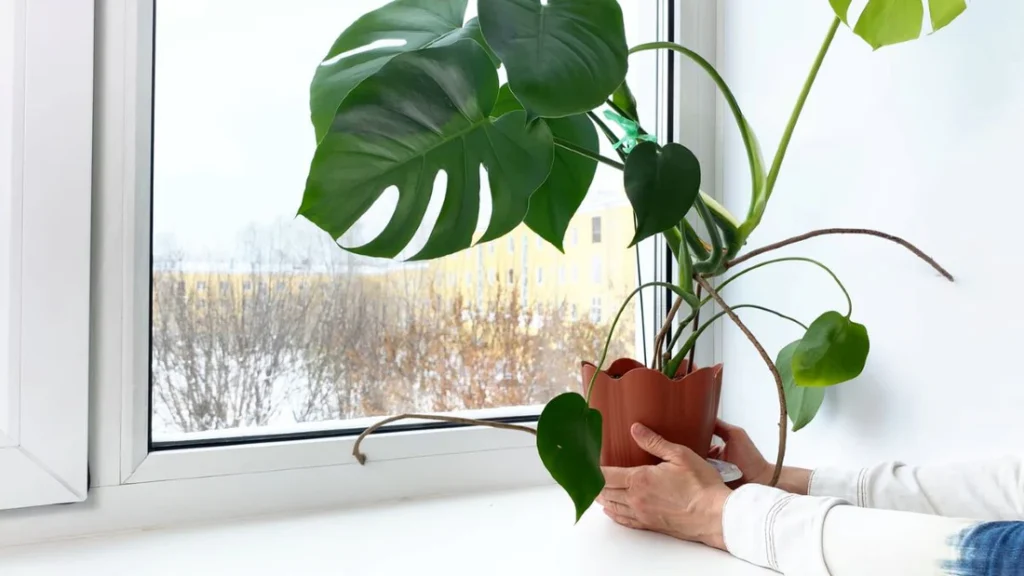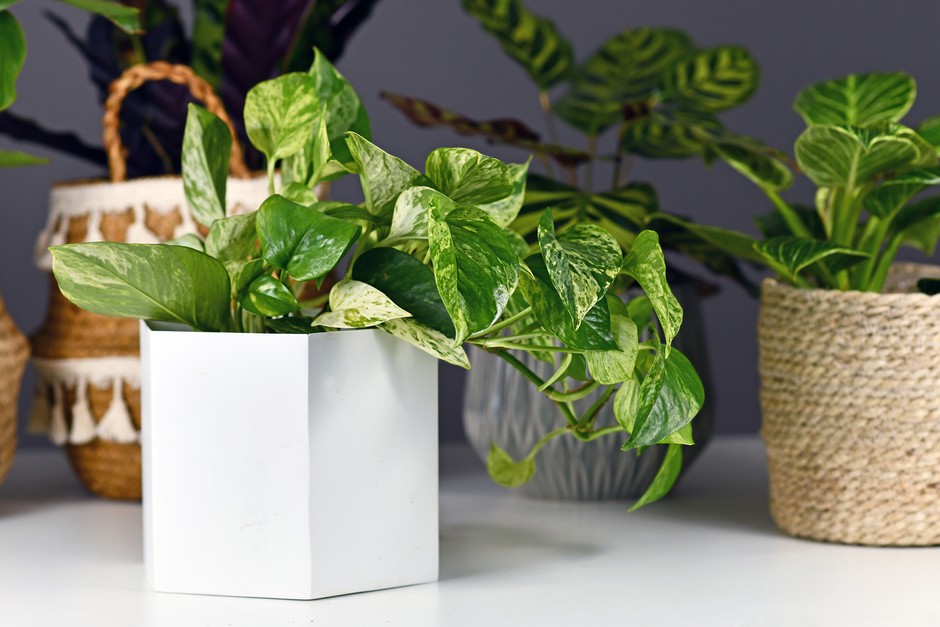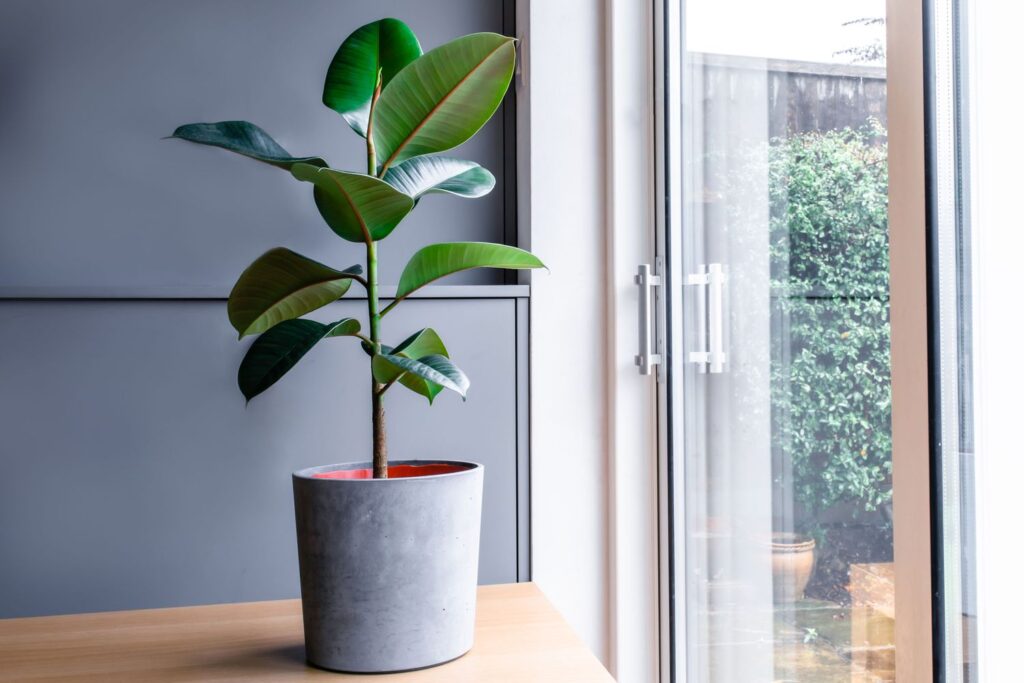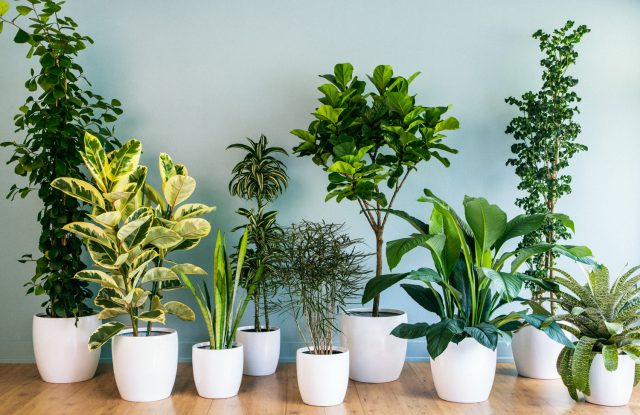Contents
Introduction: Best Indoor Plants for Winter Months
As the days get shorter and the temperature drops, our homes can start to feel a little dull and lifeless. Winter often brings with it a sense of hibernation, where the once vibrant outdoors turns into a world of grey skies and bare trees. But just because it’s cold outside doesn’t mean your home has to feel like a winter wasteland. This is where indoor plants come in, bringing life, color, and even health benefits to your indoor space during the colder months.
Why Are Indoor Plants Important During Winter?
Indoor plants do more than just sit there and look pretty. They’re like little green superheroes for your home, especially during winter. First, they’re great at boosting indoor air quality. When the windows are shut tight to keep the cold out, indoor air can get stuffy and full of pollutants from things like cooking, cleaning, or even just breathing. Plants naturally filter out these toxins and pump fresh oxygen back into the air, making your home feel fresher and healthier.

But the benefits don’t stop there. Winter is also the season when many people experience the “winter blues” or Seasonal Affective Disorder (SAD). The lack of sunlight and the tendency to stay indoors more can take a toll on our mental well-being. Having greenery around can help lift your spirits, providing a sense of connection to nature and even reducing stress levels. It’s amazing how just a bit of green can brighten your mood and make your home feel more inviting.
On top of all that, indoor plants are an easy and affordable way to add some aesthetic appeal to your space. With the right plants, you can create a cozy, lush atmosphere that contrasts beautifully with the chilly, bare landscapes outside. Whether it’s a tall leafy tree in the corner of your living room or a small potted succulent on your desk, plants can instantly transform a room, making it feel warmer and more vibrant.
What Should You Consider When Choosing Indoor Plants for Winter?
Not all plants are cut out for winter life indoors. Some thrive in the bright, sunny days of summer but struggle when the light fades and the air dries out. When choosing the best indoor plants for winter, there are a few key factors to keep in mind.
First up, think about the light in your home. Winter means shorter days and weaker sunlight, so it’s important to pick plants that can survive with less light. Some plants are happy in the dim corners of your home, while others need a bit more brightness.
Temperature is another biggie. With heaters running and cold drafts sneaking in from windows and doors, indoor temperatures can fluctuate a lot during winter. Some plants are sensitive to these changes, so you’ll want to choose varieties that can handle a bit of temperature variation without getting too stressed.
Lastly, there’s humidity to consider. Winter air, especially in heated homes, can get really dry. Some plants need more moisture in the air to stay healthy, so you might need to give them a little extra love, like misting their leaves or using a humidifier. On the other hand, there are plants that are perfectly fine with lower humidity levels, making them a great choice for the season.
By keeping these factors in mind, you can select the perfect indoor plants that not only survive but thrive during the winter months. They’ll bring a bit of the outdoors inside, helping you create a cozy, green oasis that you can enjoy all season long.
Criteria for Choosing Winter-Resilient Indoor Plants
When it comes to picking the best indoor plants for winter, not just any plant will do. Winter brings unique challenges—less light, colder temperatures, and drier air—that can stress out many houseplants. But don’t worry, there are plenty of hardy plants out there that can handle these conditions like champs. Let’s break down the key criteria to help you choose plants that will thrive in your home during the colder months.
Low Light Tolerance
Winter days are short, and even the sunniest spots in your home get less light. This can be a real issue for plants that need lots of sunlight to stay healthy. However, there are many plants that are perfectly happy with lower light levels. These low light-tolerant plants can make the most out of the dim winter days, continuing to grow and even flourish in conditions where others might wither.
Understanding what “low light” means can be a bit confusing, but in general, it refers to areas in your home where direct sunlight doesn’t reach, like rooms with north-facing windows or corners that are away from windows entirely. Plants like Snake Plants, ZZ Plants, and Pothos are great examples of varieties that do well even when the light is less than ideal.
Temperature Sensitivity
Winter can be a tricky time for indoor temperatures. Your home might be cozy during the day, but as soon as the sun sets, the temperature can drop, especially near windows or in rooms that aren’t well insulated. Some plants are sensitive to these fluctuations, and too much cold can cause them to go into shock or even die.
That’s why it’s important to choose plants that can handle a bit of chill without fuss. Plants like the Rubber Plant or the Peace Lily are pretty adaptable and can thrive in average indoor temperatures, even when there are slight dips during the night. The key is to avoid putting your plants too close to drafty windows or doors where they might get hit with a blast of cold air.
Humidity Requirements
If you’ve ever noticed that your skin feels drier in the winter, it’s because the air inside gets much less humid when the heater is on. This dry air can also affect your plants, especially those that are used to more tropical, humid environments. Without enough moisture in the air, these plants can start to dry out, with leaves turning brown or crispy at the edges.
But not all plants are so fussy about humidity. Some, like the Snake Plant or ZZ Plant, are quite happy in drier conditions and don’t need you to run a humidifier 24/7. That said, if you love the look of more humidity-loving plants like the Peace Lily, there are ways to keep them happy—like misting their leaves occasionally or grouping them together to create a mini rainforest effect that traps moisture.
Ease of Care
Let’s face it—winter is a time when we all want to relax and take things easy, not spend hours fussing over plants. That’s why it’s a good idea to pick indoor plants that are low-maintenance and resilient to the typical issues that come with indoor winter life. Think about plants that can handle a bit of neglect, like going a little too long between waterings or dealing with inconsistent light.
Plants like the Pothos, Spider Plant, and Snake Plant are not only tough as nails but also very forgiving if you forget about them for a while. They’re perfect for both beginner plant parents and seasoned green thumbs who want to keep their indoor jungle going with minimal effort.
By focusing on these criteria—low light tolerance, temperature resilience, humidity needs, and ease of care—you can find the perfect winter-resilient indoor plants that will keep your home green and lively all season long. Whether you’re looking to add a touch of nature to your living room, brighten up a dreary office, or create a cozy nook in your bedroom, these plants are sure to make the colder months much more enjoyable.
Top Indoor Plants for Winter
Now that you know what to look for in winter-resilient indoor plants, it’s time to get specific. Below are some of the best indoor plants that not only survive but thrive during the winter months. These plants are hardy, low-maintenance, and add a touch of nature to your home when it’s too cold to enjoy the outdoors.
Snake Plant (Sansevieria)
The Snake Plant is a superstar when it comes to winter indoor plants. Known for its stiff, upright leaves that come in various shades of green, this plant is practically indestructible. It’s one of those rare plants that actually seems to prefer being neglected a bit. Snake Plants thrive in low light, which makes them perfect for winter months when natural sunlight is scarce. They can handle a wide range of temperatures, so you don’t have to worry too much about the occasional draft or cooler room.
Another big plus is their air-purifying ability. Snake Plants filter out toxins like formaldehyde and benzene from the air, making your home a healthier place to be. As for care, they’re incredibly low-maintenance—just water them sparingly, as they’re prone to root rot if overwatered, and they’ll keep growing strong.
Pothos (Epipremnum aureum)
Pothos, also known as Devil’s Ivy, is another fantastic option for indoor greenery during the winter. With its heart-shaped leaves and trailing vines, Pothos adds a lush, vibrant look to any space. This plant is incredibly versatile when it comes to light conditions—it can thrive in both low light and brighter spots, making it a perfect fit for winter.

Pothos is also very easy to care for, making it a great choice for busy folks or those new to indoor gardening. It doesn’t need a lot of water and is quite tolerant of neglect, so even if you forget about it for a week or two, it will still be happy. Plus, like the Snake Plant, Pothos also helps purify the air, adding both beauty and health benefits to your home.
ZZ Plant (Zamioculcas zamiifolia)
If you’re looking for a plant that can survive almost anything, the ZZ Plant is your go-to. This plant has thick, waxy leaves that store water, making it extremely drought-resistant. It’s one of the best plants for low-light conditions, which is ideal for those long winter months when sunlight is hard to come by.
The ZZ Plant is also incredibly low-maintenance. It doesn’t require frequent watering—once every few weeks is usually enough—and it can thrive in a variety of indoor temperatures. The plant’s shiny, dark green leaves add a touch of elegance to any room, and its hardy nature means it’s almost impossible to kill, making it perfect for both beginners and seasoned plant lovers.
Spider Plant (Chlorophytum comosum)
The Spider Plant is a classic indoor plant that’s both easy to care for and highly adaptable. It’s known for its long, arching leaves that can be solid green or striped with white, and it often produces little “spiderettes” or baby plants that dangle from the main plant like little spiders on a web.
Spider Plants do well in various lighting conditions, from low to bright, indirect light, which makes them perfect for winter when daylight is limited. They’re also tolerant of a range of indoor temperatures, so they can handle the fluctuations that come with heating and cooling your home during the winter. As a bonus, Spider Plants are great air purifiers, removing toxins like formaldehyde and xylene from the air.
Peace Lily (Spathiphyllum)
Peace Lilies are another excellent choice for winter indoor plants, especially if you’re looking for something that can flower even in low light. With their lush, dark green leaves and striking white flowers, Peace Lilies bring a touch of elegance and tranquility to any room.
These plants prefer lower light conditions, so they’re perfectly suited to the dimmer light of winter. They do like a bit more humidity, so placing them in a bathroom or regularly misting their leaves can help keep them happy. Peace Lilies also help purify the air, making them a beautiful and practical addition to your winter home.
Rubber Plant (Ficus elastica)
The Rubber Plant is known for its large, glossy leaves that make a bold statement in any indoor space. It’s a robust plant that can handle the challenges of winter quite well. While it prefers bright, indirect light, it can also adapt to lower light conditions, which makes it suitable for winter when sunlight is limited.

Rubber Plants are fairly easy to care for, needing only moderate watering—just be sure to let the soil dry out between waterings to avoid overwatering. They’re also pretty resilient to temperature fluctuations, making them a great option for rooms that might get a bit cooler at night. Their striking appearance and relative ease of care make Rubber Plants a favorite for many indoor gardeners.
Tips for Keeping Indoor Plants Healthy During Winter
Winter can be a tough time for indoor plants. The combination of shorter days, less sunlight, dry indoor air, and fluctuating temperatures can create a challenging environment for your green friends. But with a few simple adjustments to your plant care routine, you can help your indoor plants stay healthy and thriving all winter long. Here are some practical tips to keep your plants in top shape during the colder months.
Adjusting Watering Practices
One of the most important things to tweak during winter is your watering routine. In the warmer months, plants tend to need more water because they’re growing actively and the heat causes water to evaporate faster. But in winter, most plants slow down their growth, and the cooler, darker conditions mean they don’t need as much water.
Overwatering is one of the most common mistakes people make with their indoor plants in winter. Too much water can lead to root rot, which is often fatal for plants. To avoid this, make sure the soil is completely dry before you water again. A good rule of thumb is to check the top inch or so of the soil—if it feels dry, it’s time to water. You can also reduce the frequency of watering to match the plant’s slower growth rate.
Keep an eye out for signs of overwatering, like yellowing leaves or a musty smell from the soil, and adjust accordingly. It’s always better to underwater a little during winter, as most plants are more tolerant of dry conditions than they are of soggy soil.
Managing Light Exposure
With the days being shorter and the sun lower in the sky, your plants will naturally get less light in winter. This reduced light can be a challenge, especially for plants that are used to brighter conditions. To help your plants get the light they need, consider moving them to a brighter spot in your home. South-facing windows are ideal because they get the most sunlight during the day.
If natural light is really limited, you might want to think about using artificial lighting to give your plants a boost. LED grow lights are a great option—they’re energy-efficient and can provide the full spectrum of light that plants need to photosynthesize and grow. Even a few hours of extra light each day can make a big difference for your plants’ health during the winter.
Controlling Humidity Levels
Indoor air can get very dry in the winter, especially with heating systems running constantly. This lack of humidity can be tough on plants, particularly those that are used to more tropical, humid environments. Dry air can cause the edges of leaves to turn brown and crispy, and it can make it harder for plants to absorb water through their roots.
To combat dry air, you can increase the humidity around your plants in a few different ways. One simple method is to mist your plants’ leaves with water every few days. Another option is to use a humidifier, which can help maintain a consistent level of moisture in the air. Grouping plants together can also create a more humid microenvironment as they release moisture through transpiration.
Placing a shallow tray of water near your plants or setting your plant pots on a tray filled with pebbles and water can also help. As the water evaporates, it adds humidity to the air around your plants.
Temperature Management
Winter often brings temperature fluctuations indoors, from the warmth of daytime heating to the cooler temperatures at night. Some plants can be sensitive to these changes, so it’s important to keep their environment as stable as possible.
First, try to avoid placing your plants near drafts or in spots where they’ll be exposed to cold air, like near windows or doors that are frequently opened. Sudden cold drafts can shock plants and cause their leaves to drop. Similarly, don’t place them too close to radiators or heating vents, where the air can get too hot and dry.
Most indoor plants are comfortable in typical household temperatures, so as long as your home stays between 65-75°F (18-24°C), your plants should be fine. If your home tends to get cooler at night, consider moving more sensitive plants to a warmer spot in the evening.
Conclusion
As winter settles in and the days grow colder and shorter, having a thriving collection of indoor plants can make a world of difference in your home. They not only brighten up your living space but also offer numerous benefits, from improving air quality to boosting your mood. By choosing the right plants and giving them the care they need, you can create a cozy, green sanctuary that helps you beat the winter blues.
Summary of Key Points
Throughout this guide, we’ve explored the best indoor plants for winter and shared practical tips on how to keep them healthy during the colder months. We started by understanding the importance of indoor plants in winter—not just for their aesthetic appeal, but also for their ability to purify air and lift spirits. We then looked at the key criteria for selecting winter-resilient plants, such as their tolerance for low light, temperature fluctuations, and dry indoor air.
We also highlighted some of the top indoor plants that thrive in winter conditions, including the ever-popular Snake Plant, the versatile Pothos, and the hardy ZZ Plant, among others. Each of these plants has unique characteristics that make them ideal for bringing life into your home during the darkest time of the year.
Finally, we shared essential tips for winter plant care, focusing on adjusting watering practices, managing light exposure, controlling humidity levels, and maintaining stable temperatures. These simple yet effective strategies can help ensure your plants not only survive but flourish throughout the winter months.
Encouragement to Incorporate Plants into Winter Decor
As you prepare your home for winter, don’t forget to incorporate some greenery into your décor. Indoor plants are a natural and beautiful way to add warmth and vibrancy to any space, whether it’s a large statement plant in your living room or a small, cheerful plant on your windowsill. They’re also a great way to personalize your space and make it feel more inviting.
Consider grouping several plants together to create a mini indoor garden, or mix and match different types of plants to add variety and interest. You can even use plants to complement your holiday decorations, adding a touch of green to your festive décor. The possibilities are endless, and the benefits are undeniable.
Long-Term Benefits
The care and attention you give your plants during the winter will pay off long-term. By keeping your plants healthy and happy through the colder months, you’re setting the stage for them to thrive even more when spring rolls around. Plus, the routine of tending to your plants can become a relaxing and rewarding part of your daily life, providing a sense of connection to nature even when it’s too cold to go outside.
In conclusion, bringing plants into your home during winter is more than just a way to keep your space looking lively. It’s an investment in your well-being and a reminder that even in the depths of winter, life can continue to grow and flourish. So, whether you’re an experienced plant parent or just starting out, now is the perfect time to embrace the beauty and benefits of indoor plants in your winter décor. Your home—and your mood—will thank you for it.



